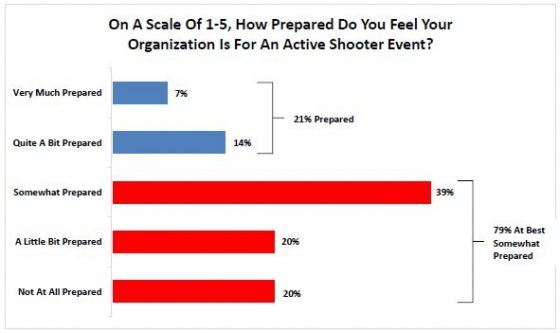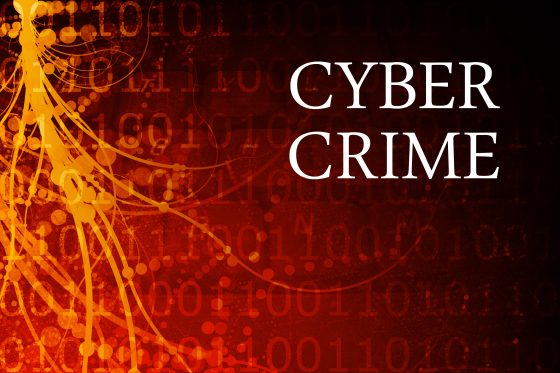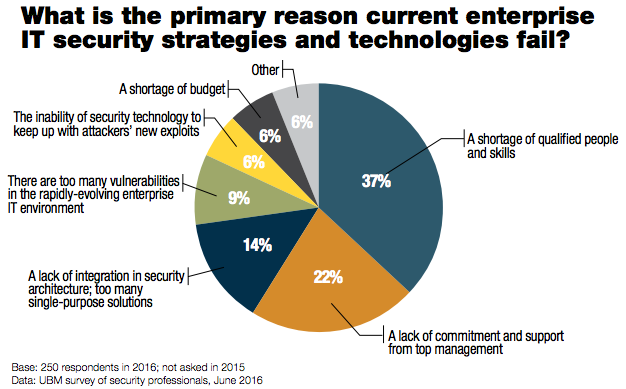Between 2014 and 2015, the United States experienced nearly six times as many active shooter incidents as it did between 2000 and 2001, according to the FBI.
The report, Active Shooter Preparedness by Everbridge, found that even though U.S. companies are overwhelmingly concerned about violence and violent acts in the workplace, they remain unprepared.
Out of 888 organizations surveyed about their safety plans and ability to manage an active shooter situation, only 21% felt that they were prepared; and 79% said their organizations were at best somewhat prepared for an active shooter incident. Even among those who feel they are prepared, only 7% are “very much prepared,” Everbridge said.

Preparedness is important, as companies cannot rely solely on police and other government assistance.
According to an FBI study of active shooter events between 2000 and 2013, 60% ended before the police arrived. Adequate preparedness requires communication and practice plans to make sure responders know who is at risk and that people know what to do if an event happens.
Despite this, close to 40% of respondents said they did not have a communications plan in place for active shooter events.

The survey also found that executives of organizations are much more concerned about employee or student safety than they were two years ago—the overwhelming majority (79%) said they were.

Other Findings:
- 69% of respondents view an active shooter incident as a potential top threat to their company or organization. Workplace violence was cited as a top threat by 62%.
- Communicating to people who may be in an impacted building and confirming their safety was seen as the biggest challenge during an active shooter situation (71% of respondents).
- Safety concerns are growing: 79% of executives/leaders are more concerned about employee or student safety than they were two years ago; 73% said that employees or students are willing to exchange some aspects of privacy for enhanced security.
- 61% do not run any active shooter preparedness drills at all.



